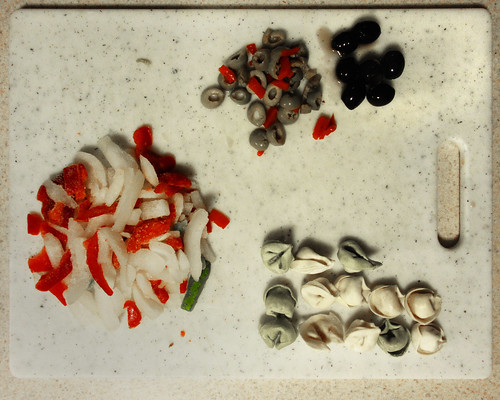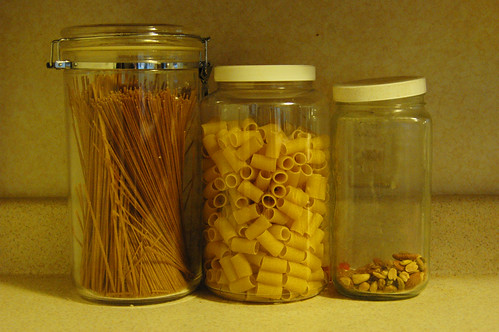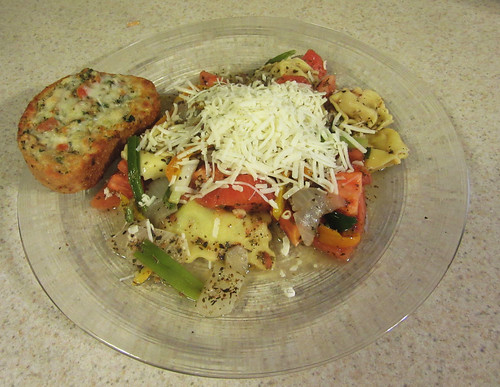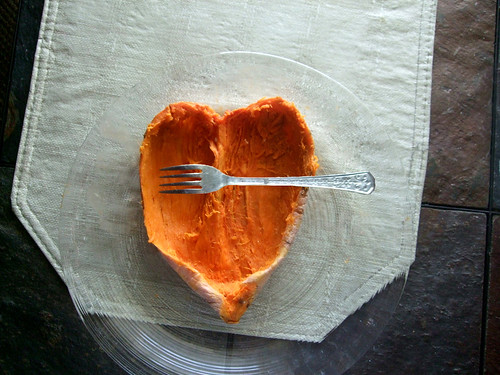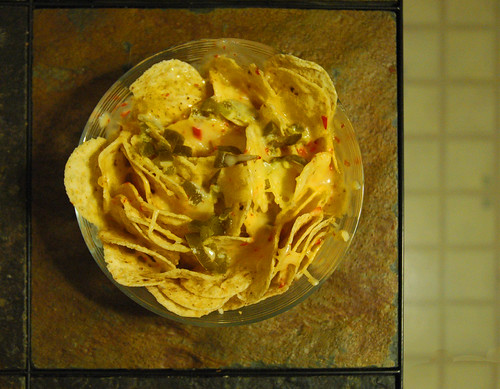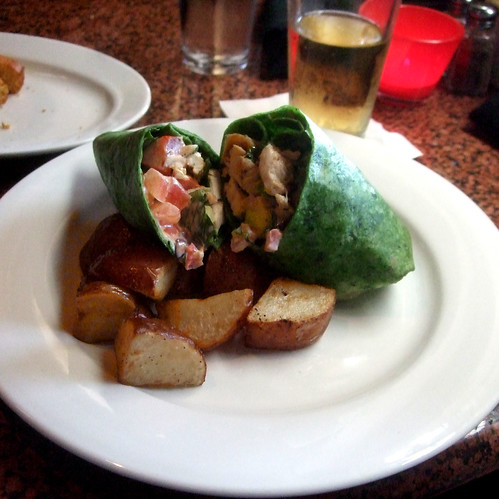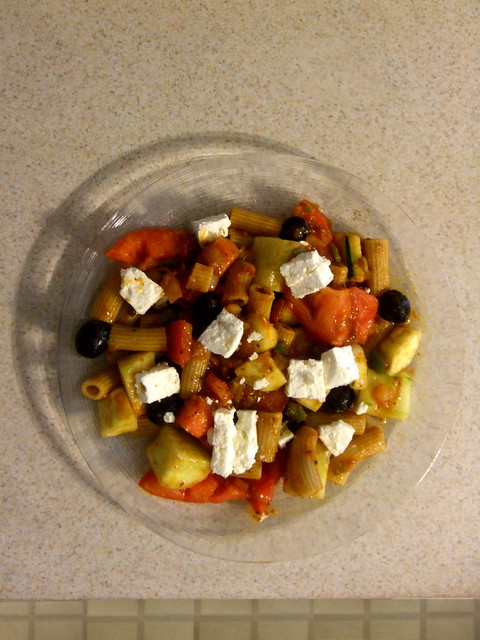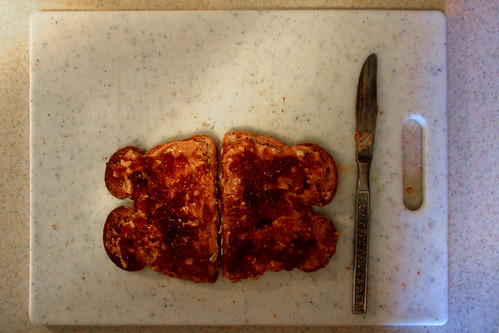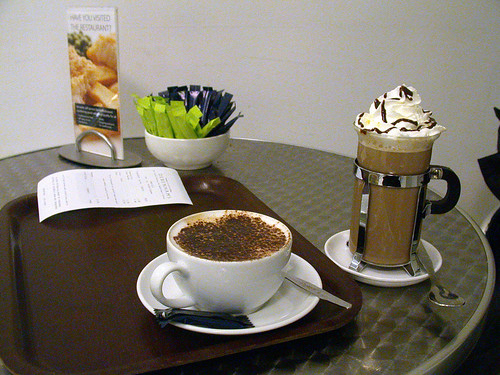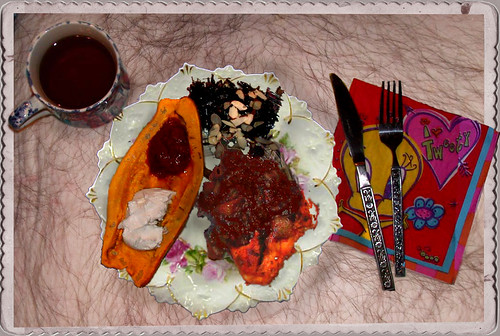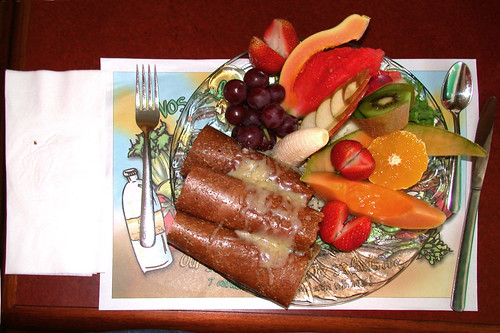Music Monday and Arty Farty Friday have been around this blog for years; along those lines: a Midweek Mealtime, a Tuesday Taste Test, or a Wednesday Whatever? The first title covers more than 24 hours - I shall go with that one!
What are some red flags you're at a bad Italian restaurant?
A question asked at Quora. I've picked out, below, a few points from several answers, illustration added by yours truly.
This topic interested me, having frequently complained to my husband about local "Italian" restaurants, as well as some we've had the misfortune to try, on our travels. I do realise, however, that the owners of Italian restaurants in some areas of the USA (such as Oklahoma) even if Italian by birth or by descent themselves, are limited in how authentic they can be due to difficulties, and expense, of obtaining authentic ingredients.
My own experience of authentic Italian food was during my time in Rome and in my ex-husband's family's home in the North of Italy. That was long, long ago and far away, but I have not forgotten the often mesmerising scents and tastes of properly prepared Italian food. It's never going to be possible to re-create the experience totally, even in the best of the best Italian eateries in the USA - or in the UK - though access to authentic ingredients will have been easier in the UK. Post Brexit - who knows!
I do try to appreciate what is available food-wise, labelled "Italian", as long as it is reasonably tasty and fresh; if it isn't I'll grumble and make a mental note not to darken that restaurant's doors again.
Some of the points made by Quorans, below, are a tad "elitist", but that's not to say they are untrue.
So...the "red flags":
What are some red flags you're at a bad Italian restaurant?
A question asked at Quora. I've picked out, below, a few points from several answers, illustration added by yours truly.
This topic interested me, having frequently complained to my husband about local "Italian" restaurants, as well as some we've had the misfortune to try, on our travels. I do realise, however, that the owners of Italian restaurants in some areas of the USA (such as Oklahoma) even if Italian by birth or by descent themselves, are limited in how authentic they can be due to difficulties, and expense, of obtaining authentic ingredients.
My own experience of authentic Italian food was during my time in Rome and in my ex-husband's family's home in the North of Italy. That was long, long ago and far away, but I have not forgotten the often mesmerising scents and tastes of properly prepared Italian food. It's never going to be possible to re-create the experience totally, even in the best of the best Italian eateries in the USA - or in the UK - though access to authentic ingredients will have been easier in the UK. Post Brexit - who knows!
I do try to appreciate what is available food-wise, labelled "Italian", as long as it is reasonably tasty and fresh; if it isn't I'll grumble and make a mental note not to darken that restaurant's doors again.
Some of the points made by Quorans, below, are a tad "elitist", but that's not to say they are untrue.
So...the "red flags":
A bad Italian restaurant looks like you imagine it: chequered red and white tablecloths and a flask of Chianti in the window display. A bad Italian restaurant has a menu with all the well known Italian specialities: Carbonara, Bolognese, Amatriciana, Pesto. The worst have also Alfredo and Chicken Parmesan and they give you a good serving of garlic bread and olive oil to put on bread (something completely unheard of in Italy). The bad ones will have an abundance of chicken in the menu: Italians believe that chicken is a very cheap meat and chefs usually avoid to put it in their menu. If there's poultry it should be roasted cockerel (usually whole or half, never just the breast), duck, capon, pheasant or guinea fowl.
The ones that are a dantesque hell will serve pasta and meat on the same plate, or, God forbid!, pasta, meat and seafood on the very same dish.
(From Emilio Trussardi's full answer -there are some argumentative comments beneath it too.)
If you find chicken parmesan or linguini alfredo, there’re no Italians in the kitchen.
But of course it’s all a matter of ingredients. Just a little example: mozzarella.
This iconic cheese from cow or buffalo milk is definitely badly imitated around the world.
(Alberto Formenti)
Examples of bad imitations are provided along with some photos of the real mozzarella
If the Parmesan cheese is on the table in a cheese shaker, there’s a good chance it’s a cheap, store bought brand. Trust the places that grate the cheese in front of you.
I know people from Italy howl when meatballs are served together with pasta, but it’s popular pretty much everywhere except in Italy.
Eggplant Parmigiana should be made with very thinly sliced pieces of eggplant, which is a lot of work. Many places slice them too thick.
Pasta is not traditionally a main course but again, outside of Italy it’s pretty standard to serve it that way.
If any spaghetti-shaped pasta is served cut, run, don’t walk, to the exit. And, of course, do the same if the pasta is cooked anything other than al dente.
(Joseph Panzarella)
Sunday had dinner at a popular Los Angeles area Italian restaurant that would be considered “bad” by purists: bread with butter; thousand island dressing as a salad option; walls covered with pictures of Frank Sinatra and old country Italians. But here’s the thing. The restaurant wasn’t trying to be an authentic Italian restaurant; it was an authentic New York/Chicago style Italian restaurant. ..................those pictures of old country Italians? His family photos, so you may come across a bad Italian restaurant, but that doesn’t mean it will have bad food….(Thomas Barnidge)
Should I find myself looking at the menu and find the Carbonara being made with milk or cream or peas, then it stops becoming a matter of authenticity. The food may still end up tasting good, but I’m not going to walk away saying that I had a great Italian meal. (I give a pass to using pancetta instead of guanciale by the way. The latter is very difficult to find outside of Italy for whatever reason.)
When dining outside of Italy, I won’t be too harsh on a restaurant if it’s a hodgepodge of dishes taken from Italy’s many regions—what I’m getting is basically “the best of.” I don’t mind Arancini being served with Puttanesca, Risotto alla Milanese with Saltimbocca alla Romana as long as they do it right and they stick to traditional recipes. (Myron Mariano)
Any place that offers greasy cardboard pizza by the slice.
Any place that tries too hard to be hip with the Italian vibe.
Chicken Alfredo leads the menu and the sales. They don't know what penne is.
The chef is skinny. (William Smith)
If you are outside Italy, that is a red flag from the get go. Yes, I know there are exceptions, but they are few and far between. And yes, I know there are some dreadful restaurants in Italy, but they are few and far between. Another red flag is the following: walk into the restaurant, take a deep breath and smell. If you truly know Italian cooking, you will know immediately if the food is authentic. (Anne Brooks McAdoo)













